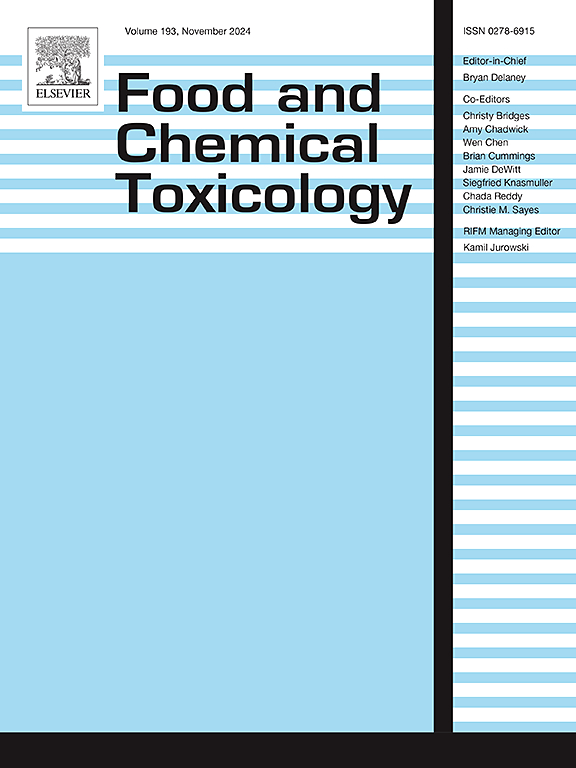An update on beverage consumption patterns and caffeine intakes in a representative sample of the US population
IF 3.5
3区 医学
Q2 FOOD SCIENCE & TECHNOLOGY
引用次数: 0
Abstract
Caffeine is a popular stimulant, predominantly consumed from beverages. The caffeinated beverage marketplace is continually evolving resulting in considerable interest in understanding the impact caffeinated beverages have on levels of intakes. Therefore, estimates of caffeine intakes in the U.S. population were calculated using a recent 2022 beverage survey, the Kantar Worldpanel Enhanced Beverage Service. A nationally representative sample of 49,700 consumers (aged ≥2 years) completed a 1-day beverage intake survey which collected data on beverage type/category, amount and brand. Approximately 69% of the U.S. population consumed at least one caffeinated beverage per day. The mean (±SE) daily caffeine intake of caffeine consumers (age >2 years) from all beverages was 210 ± 1.5 mg. Caffeine intake was highest in consumers aged 50–64 years (246 ± 4.5 mg/day) and lowest in children aged 2–5 (42 ± 2.4 mg/day). At the 90th percentile intake was 520 mg/day for all ages combined. Coffee was the largest contributor (69%) to caffeine intake across all age groups followed by carbonated soft drinks (15.4%), tea (8.8%), and energy drinks (6.3%). This study indicates that an increase in caffeine intake has occurred with a corresponding shift in beverage consumption patterns compared to previous surveys.
美国人口代表性样本中饮料消费模式和咖啡因摄入量的最新情况。
咖啡因是一种很受欢迎的兴奋剂,主要来自饮料。含咖啡因饮料市场在不断发展,人们对了解含咖啡因饮料对摄入水平的影响产生了相当大的兴趣。因此,对美国人口咖啡因摄入量的估计是根据最近的2022年饮料调查——凯度世界面板增强饮料服务——计算出来的。对49700名消费者(年龄≥2岁)进行了为期1天的饮料摄入调查,收集了饮料类型/类别、数量和品牌等数据。大约69%的美国人每天至少喝一杯含咖啡因的饮料。从所有饮料中摄入咖啡因的人(年龄在50 - 20岁)的平均每日咖啡因摄入量(±SE)为210±1.5毫克。50-64岁的消费者咖啡因摄入量最高(246±4.5毫克/天),2-5岁的儿童最低(42±2.4毫克/天)。在第90百分位,所有年龄段的总摄入量为520毫克/天。在所有年龄组中,咖啡是咖啡因摄入量的最大贡献者(69%),其次是碳酸软饮料(15.4%)、茶(8.8%)和能量饮料(6.3%)。这项研究表明,与之前的调查相比,咖啡因摄入量的增加伴随着饮料消费模式的相应转变。
本文章由计算机程序翻译,如有差异,请以英文原文为准。
求助全文
约1分钟内获得全文
求助全文
来源期刊

Food and Chemical Toxicology
工程技术-毒理学
CiteScore
10.90
自引率
4.70%
发文量
651
审稿时长
31 days
期刊介绍:
Food and Chemical Toxicology (FCT), an internationally renowned journal, that publishes original research articles and reviews on toxic effects, in animals and humans, of natural or synthetic chemicals occurring in the human environment with particular emphasis on food, drugs, and chemicals, including agricultural and industrial safety, and consumer product safety. Areas such as safety evaluation of novel foods and ingredients, biotechnologically-derived products, and nanomaterials are included in the scope of the journal. FCT also encourages submission of papers on inter-relationships between nutrition and toxicology and on in vitro techniques, particularly those fostering the 3 Rs.
The principal aim of the journal is to publish high impact, scholarly work and to serve as a multidisciplinary forum for research in toxicology. Papers submitted will be judged on the basis of scientific originality and contribution to the field, quality and subject matter. Studies should address at least one of the following:
-Adverse physiological/biochemical, or pathological changes induced by specific defined substances
-New techniques for assessing potential toxicity, including molecular biology
-Mechanisms underlying toxic phenomena
-Toxicological examinations of specific chemicals or consumer products, both those showing adverse effects and those demonstrating safety, that meet current standards of scientific acceptability.
Authors must clearly and briefly identify what novel toxic effect (s) or toxic mechanism (s) of the chemical are being reported and what their significance is in the abstract. Furthermore, sufficient doses should be included in order to provide information on NOAEL/LOAEL values.
 求助内容:
求助内容: 应助结果提醒方式:
应助结果提醒方式:


